Paleontology
-
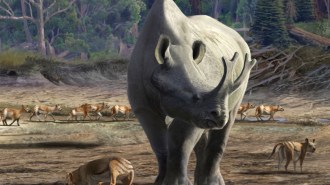 Paleontology
Paleontology‘Thunder beast’ fossils show how some mammals might have gotten big
Rhinolike mammals called brontotheres repeatedly evolved into bigger and smaller species, a fossil analysis shows. The bigger ones won out over time.
By Elise Cutts -
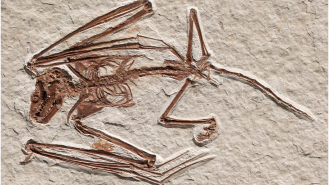 Paleontology
PaleontologyNewfound bat skeletons are the oldest on record
The newly identified species Icaronycteris gunnelli lived about 52.5 million years ago in what is now Wyoming and looked a lot like modern bats.
By Sid Perkins -
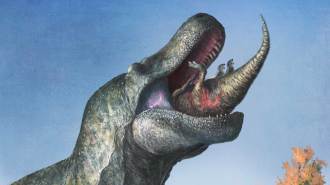 Life
LifeT. rex may have had lips like a modern lizard’s
Dinosaurs like Tyrannosaurus have long been portrayed as lipless, but new research suggests this wasn’t so.
By Jake Buehler -
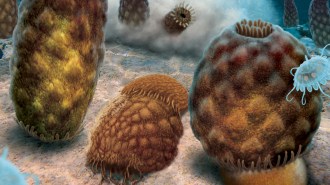 Paleontology
Paleontology310-million-year-old fossil blobs might not be jellyfish after all
An ancient animal called Essexella may have been a type of burrowing sea anemone, a new study proposes.
By Meghan Rosen -
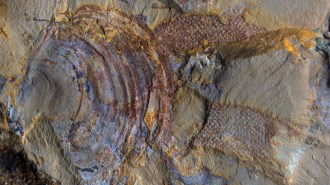 Paleontology
Paleontology520-million-year-old animal fossils might not be animals after all
Newly described fossils of Protomelission gatehousei suggest that the species, once thought to be the oldest example of bryozoans, is actually a type of colony-forming algae.
By Sid Perkins -
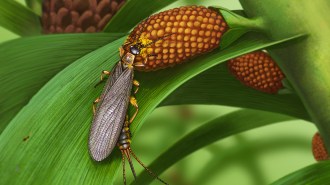 Paleontology
PaleontologyThe oldest known pollen-carrying insects lived about 280 million years ago
Pollen stuck to fossils of earwig-like Tillyardembia pushes back the earliest record of potential insect pollinators by about 120 million years.
By Sid Perkins -
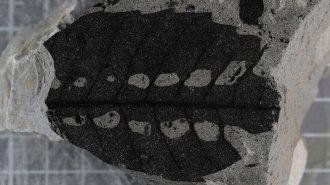 Paleontology
PaleontologyInsect bites in plant fossils reveal leaves could fold shut millions of years ago
The 252-million-year-old fossil leaves have symmetrical holes, which suggest an insect bit through the leaves when they were folded.
-
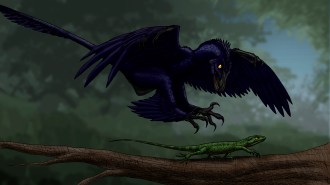 Paleontology
PaleontologyThis dinosaur might have used its feet to snag prey in midair like modern hawks
Fossilized toe pads suggest a hawklike hunting style in Microraptor, a dinosaur that some scientists think could hunt while flying.
By Derek Smith -
 Paleontology
PaleontologyIn the wake of history’s deadliest mass extinction, ocean life may have flourished
Ocean life may have recovered in just a million years after the Permian-Triassic mass extinction, fossils from South China suggest.
By Nikk Ogasa -
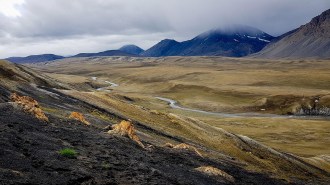 Life
LifeFossils suggest early primates lived in a once-swampy Arctic
Teeth and jawbones found on Ellesmere Island, Canada, suggest that two early primate species migrated there 52 million years ago.
By Freda Kreier -
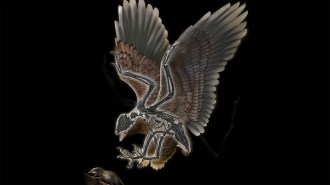 Paleontology
PaleontologyA bird with a T. rex head may help reveal how dinosaurs became birds
The 120-million-year-old Cratonavis zhui, newly discovered in China, had a head like a theropod and body like a modern bird.
-
 Paleontology
PaleontologyMysterious ichthyosaur graveyard may have been a breeding ground
Some 230 million years ago, massive dolphinlike reptiles gathered to breed in safe waters — just like many modern whales do, a study finds.